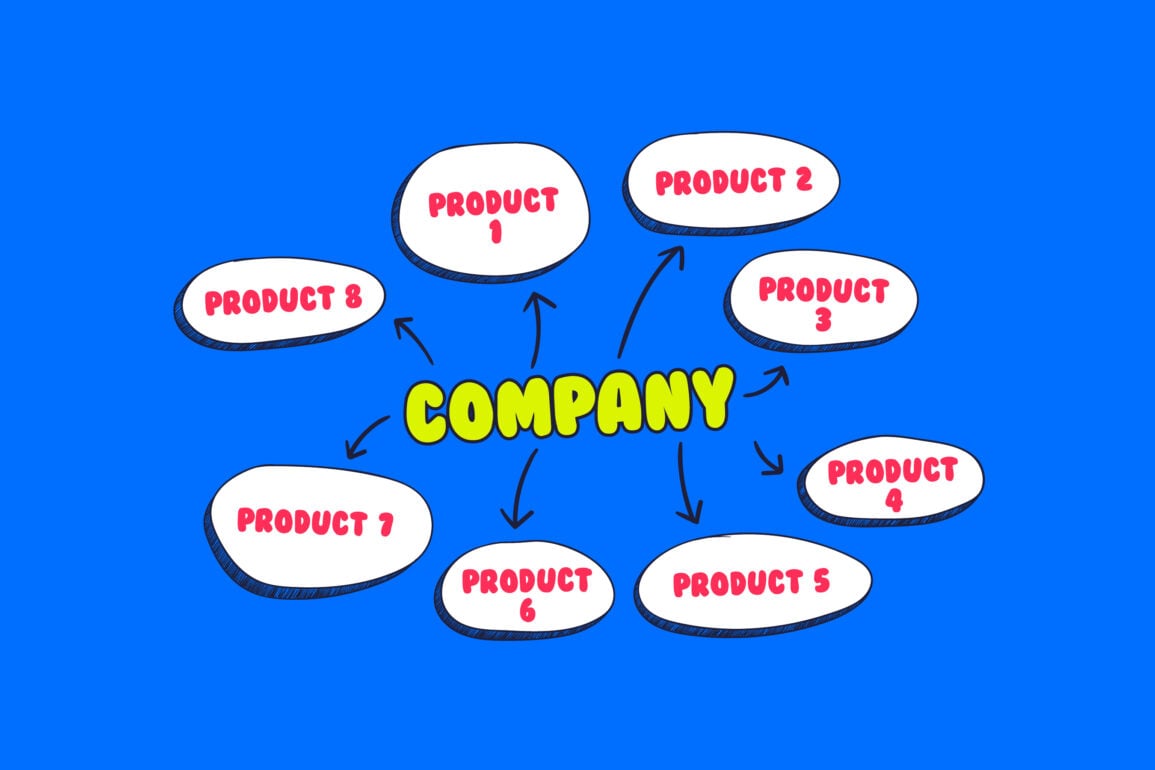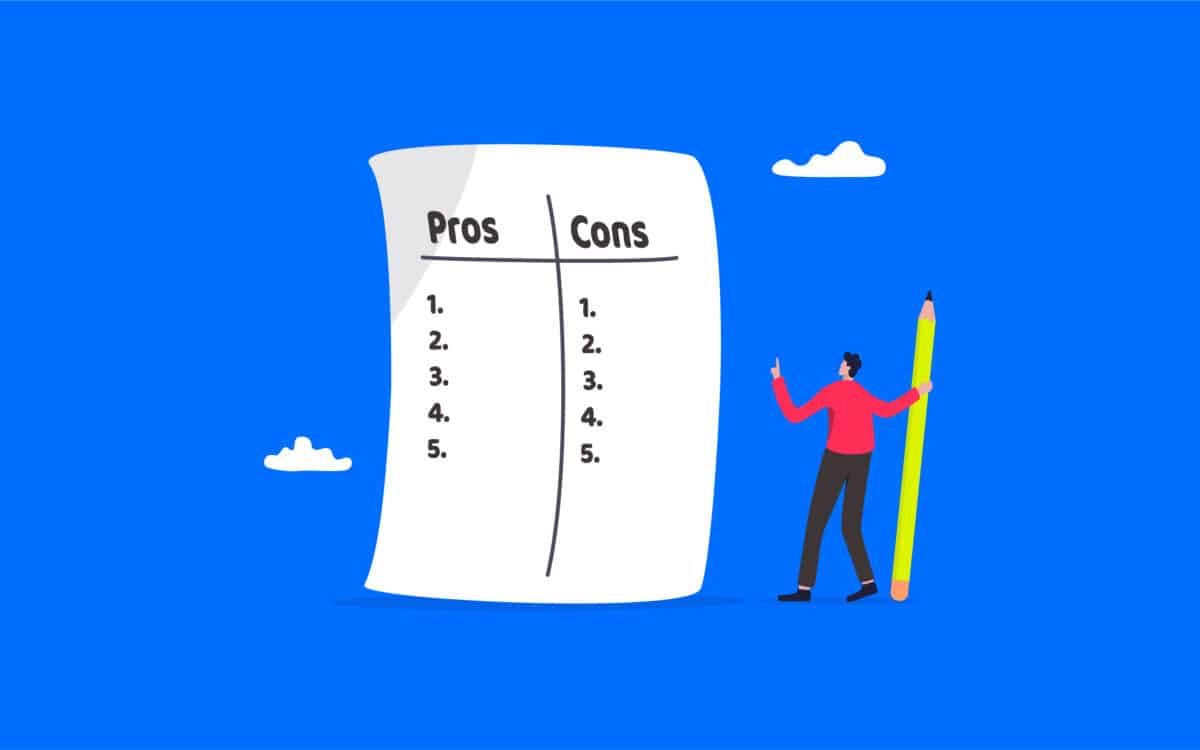What is family branding? The pros and cons of a family of brands

What is family branding and what makes it such a valuable strategy for modern companies? Simply put, a family brand, or family of brands involves using a single brand name to market multiple related products to a specific audience.
With family branding, otherwise known as “umbrella branding”, companies produce a variety of different items under the same name, to increase profit opportunities.
This branding effort is an alternative to “individual branding”, where companies focus on marketing one product at a time.
To succeed at effective family branding, companies need strong brand equity, and a consistent commitment to exceptional quality. After all, if one product in the family of brands is a disaster, the rest of the company’s reputation can suffer.
Here’s your complete guide to family branding…
What is family branding?
Family branding definition
So, what is family branding?
A brand family in the marketing and promotional world is a selection of products marketed under the same brand name, and often a consistent logo. For instance, L‘Oréal uses the same name to market lotions, shampoos, and beauty products to a consistent audience.
Individual branding, alternatively, involves giving each product its own unique name and image. Family branding involves banding various products together, often within the same niche, to help expand a company’s sales potential.
This strategy is a common way for companies to reach a wider audience, by giving all the products sold a recognizable name.
Family branding is also an excellent way to develop customer loyalty. As customers become more familiar with the company through its wide range of products, the equity of the company increases.
There are a handful of decision-based theoretical concepts which help to identify how family branding works as a marketing strategy.
For instance, the psychological concept of the “categorization theory” suggests consumers tend to categorize products and associate them with specific brands. We associate Colgate with toothcare, so it makes sense they would sell mouthwash, toothbrushes, toothpaste, and similar products.

What is meant by a “family brand” strategy?
Companies through virtually every industry use family branding techniques to market products. A company in the food industry might make and sell frozen food, condiments, and snacks under the same name.
Because the organization already has a strong association with the food industry, they can sell a range of products under the same name without confusing its audience.
The most essential element of a family brand is a strong master brand. The parent company behind all of the products sold within a family brand needs to be credible, trustworthy, and recognizable.
This is why family brands work hard on their promotional strategies, to ensure they maintain a consistent connection with their target audience.
Notably, a family brand isn’t the same as a “house of brands”. In a house of brands, the company has a range of “sub brands” underneath its primary name, responsible for selling different products.
Companies like Heineken, for example, are also responsible for a range of other branded beers like Amstel. Each product in a house of brands has its own visual identity and name.
Family branding advantages and disadvantages
There are a number of benefits associated with having a family brand. When you design a family of brands, you create a consistent image and identity for all of your products and services, so you don’t have to start a new campaign from scratch every time you create a new product.
Families of brands minimize the costs associated with creating brand equity and recognition among new products and help companies to reach a wider audience.
However, there are downsides too.
When all of your products are connected under the same name, there’s a risk one poor product will disrupt your entire business strategy. If customers develop negative connotations with one product, they’ll naturally align those perceptions with your other items too.
Pros:
- Quick and easy promotion for all of your products under the same brand guidelines.
- Immediate recognition for new products, improving initial sales numbers.
- Consistent and familiar images help to boost brand loyalty and reach.
- Wider audience access thanks to the ability to sell more diverse products.
- Minimal time required to develop trust when exploring new product lines.
Cons:
- The poor quality of one product can easily damage the rest of your brand identity.
- If you launch a product which doesn’t make sense to your family of brands, you can confuse your audience and reduce loyalty.
What’s involved in a family branding strategy?
If you’re asking the question, “what is family branding?” you’re probably interested in the steps required to design an effective family of brands too.
While the exact strategies you use to develop your family of brands might differ depending on your audience, the most important factors often include:
If you’re asking the question, “what is family branding?” you’re probably interested in the steps required to design an effective family of brands too.
While the exact strategies you use to develop your family of brands might differ depending on your audience, the most important factors often include:
A core brand identity
You’ll need a strong core brand with clear values and a consistent mission statement to connect with your audience. The values of your parent brand will impact the perception your customers have of all the products you produce.
Creative marketing strategies
Family branding requires a deep investment in consistent promotion and marketing efforts. You’ll need to connect with your audience through multiple channels and commit to creating a consistent image wherever you are.
Relevance
When producing a family of brands, it’s important to ensure every product you sell is related to the same theme. Customers need to feel as though your items make sense based on what they already know about your organization and mission statement.
Family of brands vs umbrella brands
The question “what is family branding”, often goes hand in hand with queries about “umbrella branding”. While many people assume these are two different kinds of branding structure, they’re actually two terms for the same thing.
Family branding is often referred to as “umbrella branding” because it involves selling multiple products under the same “umbrella” company name.
This is different to a house of brands structure, where there are various sub brands working underneath a larger parent brand. With family branding, there’s a strong focus on making sure every product in the “family” is aligned with a consistent theme or niche.
Alternatively, with a house of brands, or an individual branding strategy, it’s possible for the same company to create a range of completely different products with no connection. This is done through the use of different brand images and identities for each product.
Family branding vs brand extension
Family branding is also a little different to a “brand extension”. With a brand extension, a business or organization with a well-developed product or service leverages their existing industry presence to launch a product or service in a different category.
The best example of a brand extension may be the Virgin Company. The organization produces everything from television channels and broadband services to international travel.
A brand extension allows companies to expand into different areas where a family branding campaign may not make sense.
If Virgin had maintained a strong focus on being a music company, rather than being an innovative brand, it may not have made a lot of sense for them to expand into things like air travel.
Family branding examples
If you’re not sure about the basics of family branding, it might help to look at some examples of family brands with a successful presence in the current landscape.
For instance, some of the most well-known family brands include:
1. Apple
Best known for premium design and exceptional simplicity, Apple has made a name for itself as a technology innovator. This has allowed the company to deliver a wide range of different products to its customers, from music playing devices, to phones and computers.
Apple’s selection of products might have their own names, like the iPhone, or iPod, but they all feature the same overarching branding, and the “Apple” name. This ensures customers know exactly what to expect whenever Apple produces a new product.
2. Colgate
One of the world’s most famous oral hygiene companies, Colgate is best-known for selling toothpaste. However, the company also offers a wide range of different tooth-cleaning products, from whitening strips to mouthwash and toothbrushes.
By focusing on a specific niche, and developing an identity as an oral hygiene expert, Colgate has created a consistent level of trust for all the products it produces.
They did have a problematic moment in their family branding strategy when they attempted to branch into frozen foods, but they quickly discovered the error of their ways.
3. Starbucks
One of the most famous international coffee houses in the world, Starbucks is best-known for producing delicious coffee drinks. However, the company’s success in this landscape has also allowed it to produce a family of additional products, like teas and other hot drinks.
There are various Starbucks specialty items, branded products like mugs and coffee cups, and even a range of foods available in Starbucks stores. All of the items are still related to food and drinks, so they make sense for the Starbucks identity.
Understanding family branding
Hopefully, this article has helped you to answer the question “what is family branding?” In simple terms, a family brand is simply a company committed to using the same brand identity and name for a range of products in the same connected niche or theme.
Family branding can be an excellent way for businesses looking to branch into new territories to expand their sales opportunities. However, it’s important to have the right strategy in place to ensure ongoing success.
Fabrik: A branding agency for our times.




















